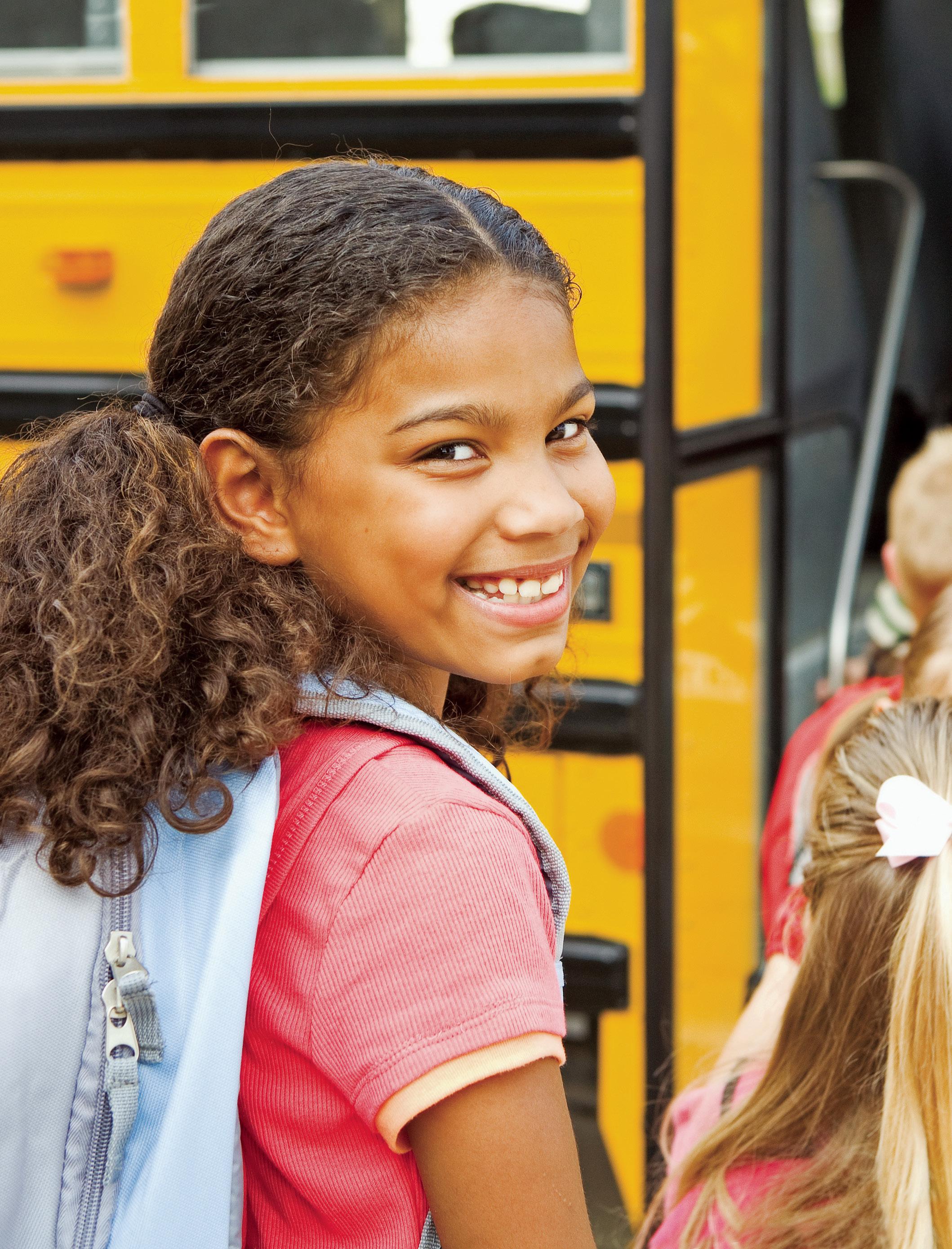

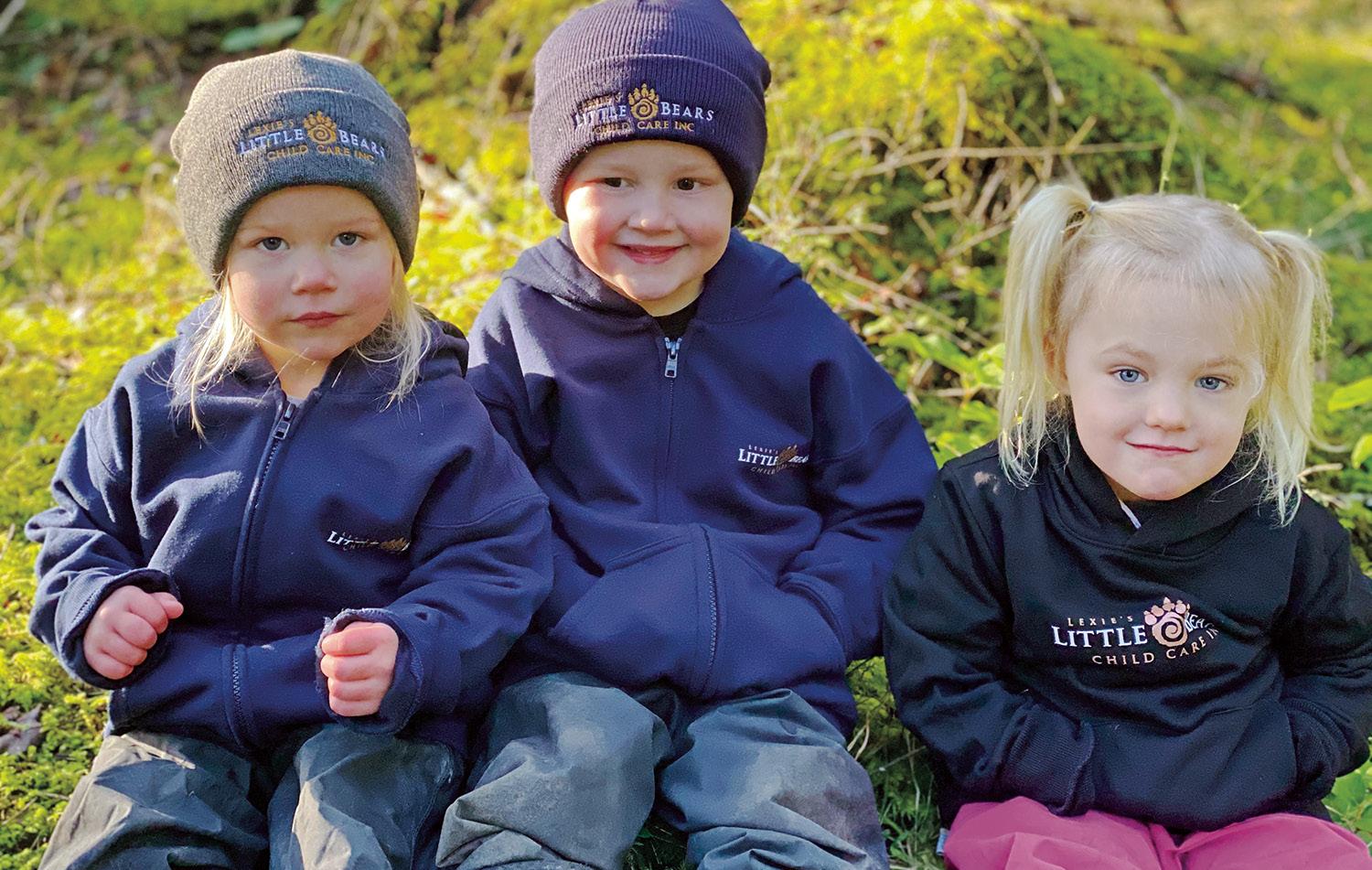

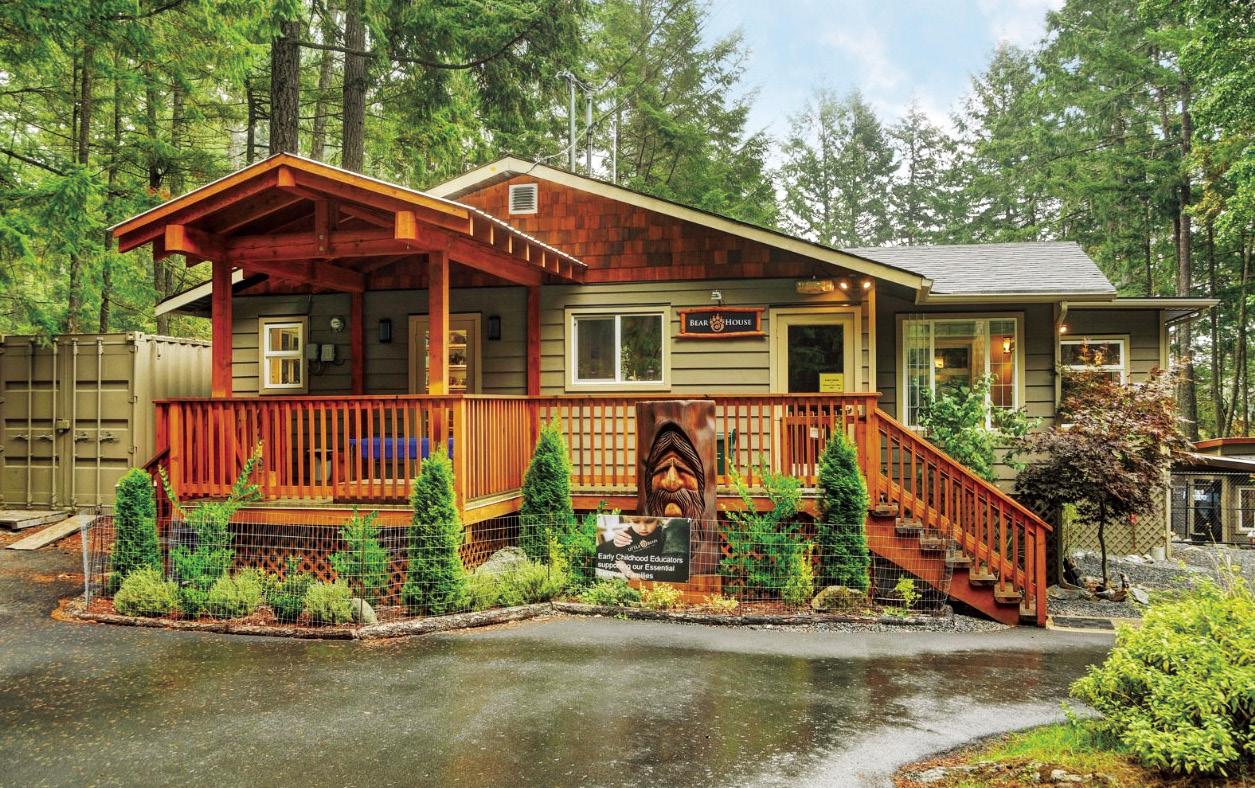
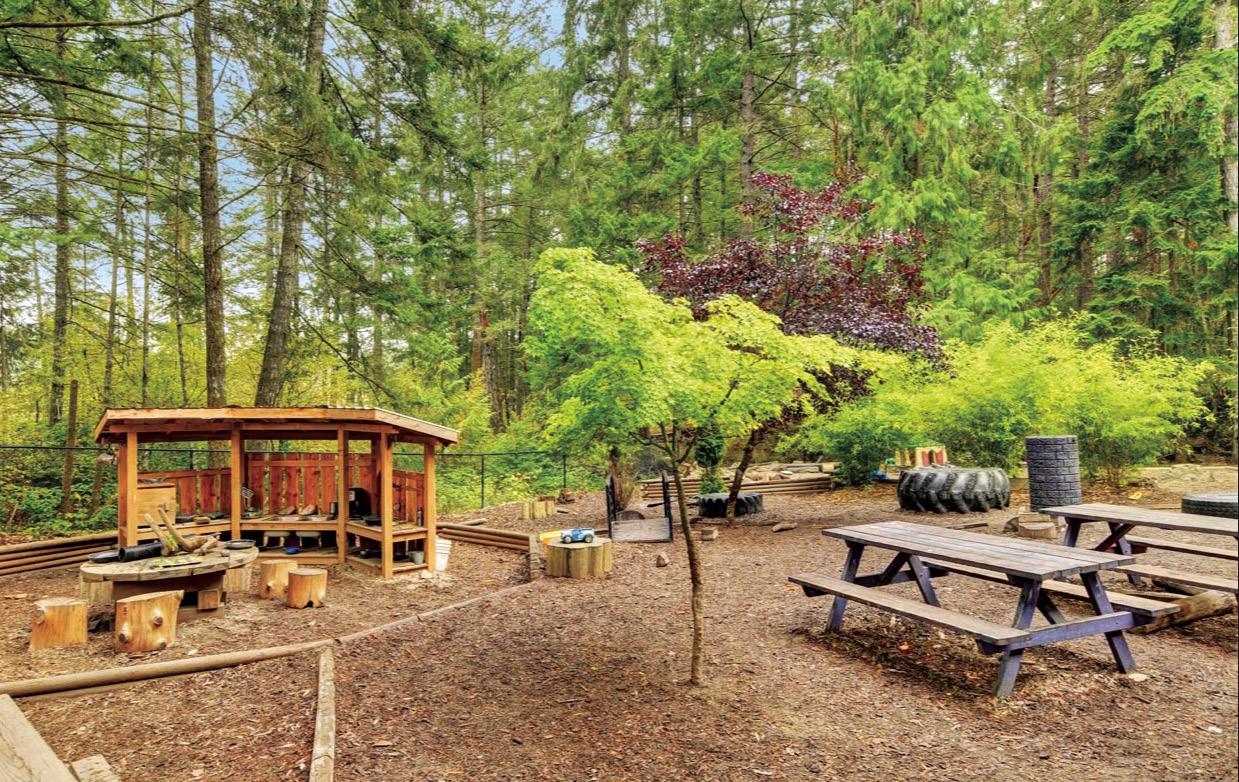




Bouncy Castles
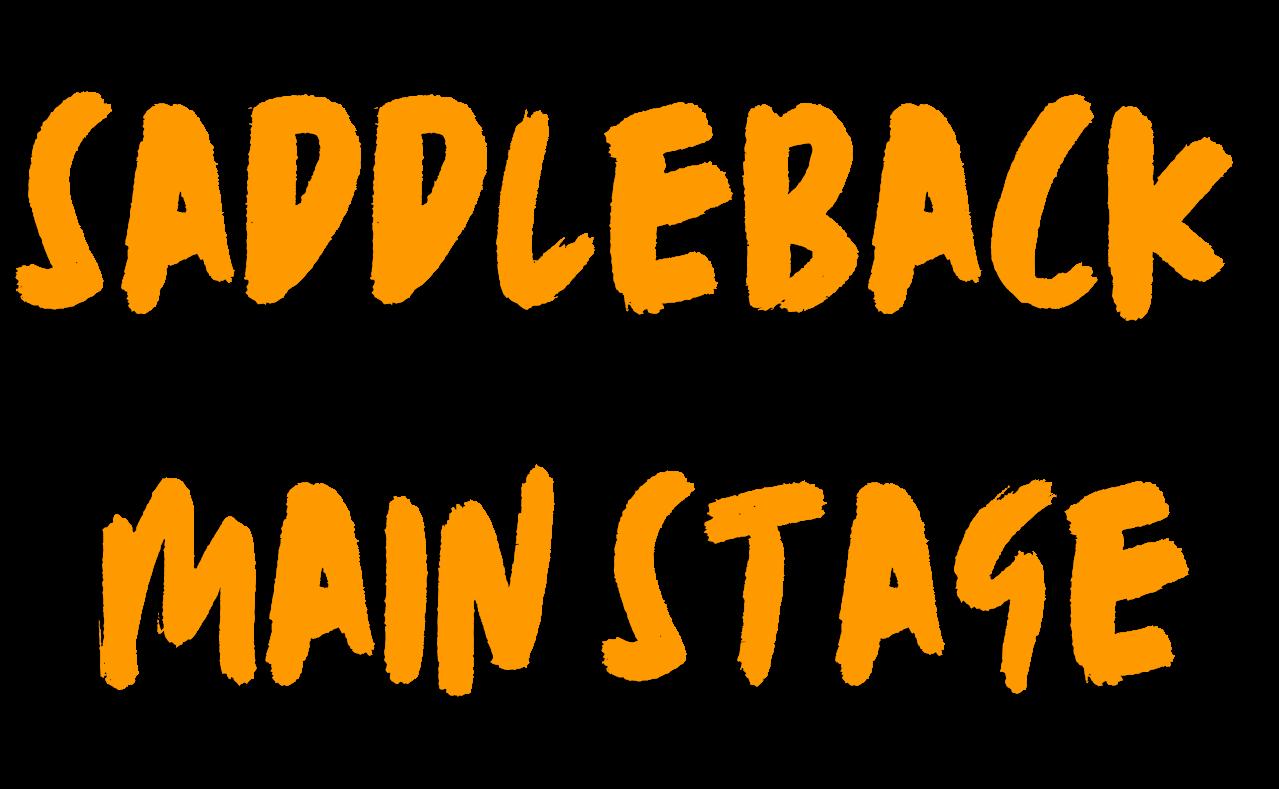
SATURDAY - 8pm

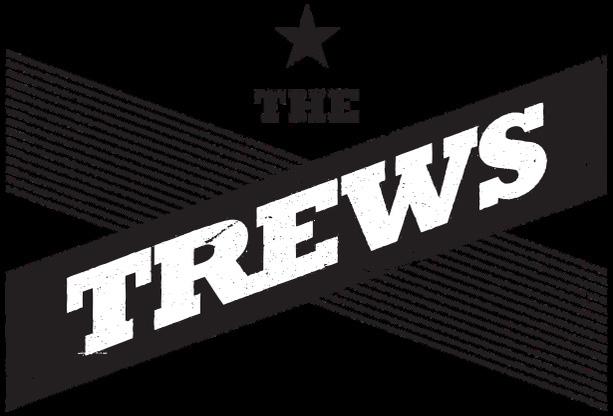
Wagon Wheel Stage
BC Aviation
Old Time Racing











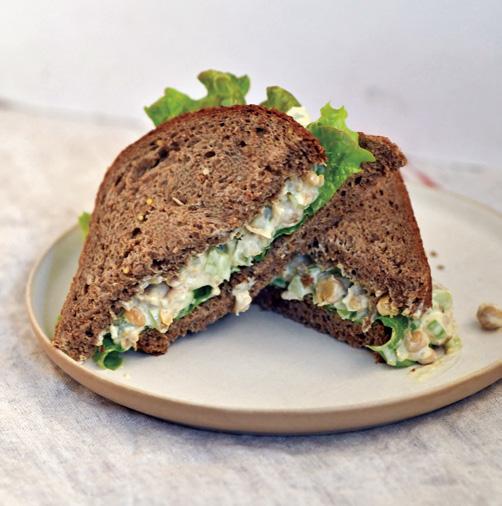




















Bouncy Castles

SATURDAY - 8pm


Wagon Wheel Stage
BC Aviation
Old Time Racing





















As the school bells begin to ring across Vancouver Island, families are preparing for more than just packed lunches and frantic mornings. Amid the early alarms, forgotten permission slips and endless to-do lists, it’s easy to lose sight of what matters most: connection and well-being for our children and for ourselves.
This season, we invite you to approach the back-to-school transition through the lens of wellness and connection.
From the seemingly simple task of getting dinner on the table each night to the complex intricacies of after-school restraint collapse, this season can feel heavy. Add in school supplies, clothes shopping, friend and teacher drama, struggles with learning new material, the return of extracurriculars, and it is easy to feel overwhelmed.
But wellness isn’t just a buzzword here; it’s a practice. The hard truth is: All these things are here to stay so it is up to us to prioritize wellness. It should be a daily practice that begins
at home. From nurturing mental health to creating meaningful family rituals, it’s imperative to slow down, reconnect and build resilience as a family—even when life feels a little chaotic. It involves noticing when our kids (and ourselves) are falling apart and learning how to be there for them in ways that builds resilience, self-responsibility and curiosity.
Whether you’re a seasoned parent helping their teenager navigate their upcoming birthday party or reaching the end of your pregnancy and wondering how to navigate the birth, it’s time for an honest conversation.
The key to a fall where wellness comes first is mindfulness. We invite you to pause, breathe and rediscover the joy and strength that comes from staying connected to your kids, your community and yourself. There will always be before-school tantrums, forgotten lunches and homework havoc but there can also be possibility, purpose and presence.
– Stacie Gaetz
It’s not too late for kids to join the summer reading club! The Vancouver Island Regional Library Summer Reading Club keeps kids engaged with reading all season long! Join for free to earn stickers, win prizes and enjoy fun events at your local branch before August 20. virl.bc.ca


The Health in Space exhibit at the Sidney Museum from now until November 30 explores how astronauts stay healthy in orbit and what that means for healthcare on Earth. Created by the Canada Aviation and Space Museum, this interactive display is fun and educational for all ages. sidneymuseum.ca
Parksville Beach Festival brings five weeks of sand, art and entertainment to one of Vancouver Island’s most iconic beaches, culminating on August 17. Featuring the world-class Quality Foods Sand Sculpting competition along with live music, artisan markets and a lot of family fun, it’s a summer tradition you don’t want to miss. parksvillebeachfest.ca

Until September 2, Parks Canada is offering free admission and discounted overnight stays at most locations across the country, including national parks, historic sites and marine areas. It’s a fantastic way to connect with nature and history this summer, while keeping your money in your wallet. parks.canada.ca

Island Health Youth Clinics offer free confidential, youth-focused care including mental health support, STI testing, birth control, harm reduction services and more by on-site nurses and a variety of other health professionals (no MSP or appointment required). These clinics are open to teens and young adults across Vancouver Island. islandhealth.ca

Celebrate harvest season at the 157th Cowichan Exhibition’s Fall Fair, hosted at the Cowichan Exhibition Grounds from September 11 to 14. This family-friendly event features livestock shows, 4-H displays, carnival rides, logger sports, agricultural exhibits, crafts, food vendors and a variety of exciting live entertainment. cowex.ca
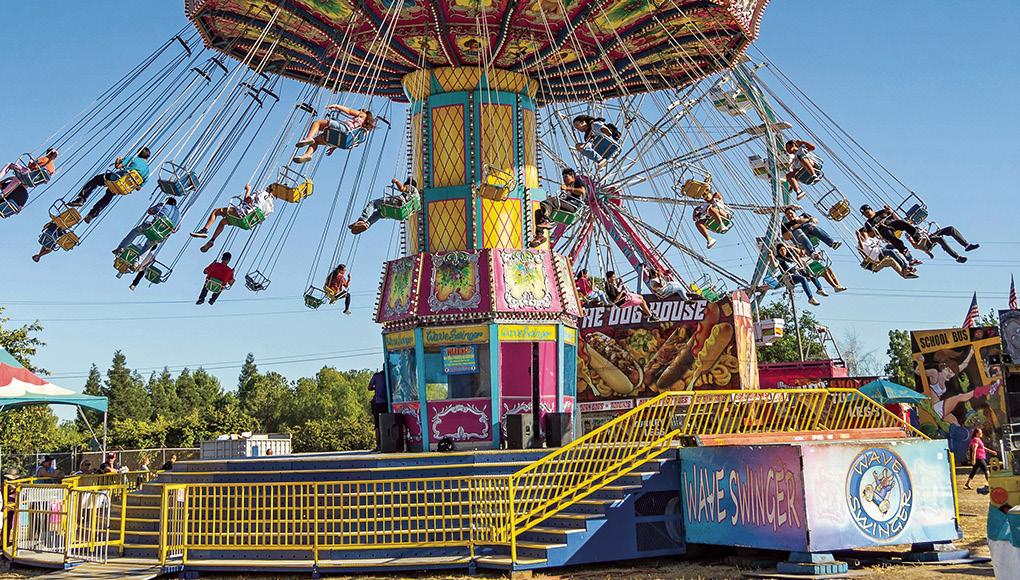
Join Nanaimo Science’s outreach educators on September 20 from 11am to 2pm at Anders and Dorrit’s Community Park in Nanaimo for some exciting tree science! This free, all ages, parent participation event includes a nature walk, tree identification, examining tree samples under microscopes and doing leaf rubbings. rdn.bc.ca


With expanded midway space, more demos and a few other updates, the 2025 Saanich Fair promises to be the best one yet! From August 30 to September 1, bring the whole family to the Saanich Fairgrounds for more fun rides than ever before, good food, contests and tons of entertainment for everyone to enjoy. saanichfair.ca

It’s the grand finale of Campbell River’s live street series on August 27. Music in the Night will feature the energetic pop duo Velavox followed by the beloved West Coast band Hey Ocean! This family-friendly event takes over Shoppers Row from 6:30 to 10pm and is free, so come out for dancing, community and a lot of fun! campbellriver.ca
Specializing in ice cream sandwiches, baked Alaska and non-dairy options, Cold Comfort has been on the sweet scene since 2013. Proudly hand-made, custard-based ice creams made using local ingredients create some awesome classic flavours—and some surprising tastes. Grab a scoop, sandwich or pint at one of their two locations in Victoria or pick some up at several grocery stores on the South Island. coldcomfort.ca


Located in Nanaimo, Burnt Honey Dessert Company was started in 2019 by a couple with a passion for ice cream, entrepreneurship and inclusion. Homemade, high-quality ice cream, along with macarons in a variety of flavours—mostly gluten free and some dairy free—are crafted using as many local ingredients as possible. burnthoneydessertco.com
Since 1999, the Original Udder Guys has been serving up handmade delicious artisan ice cream made in their Cowichan Bay waterfront location. In addition to the yummy ice cream, available in scoops or pints, this incredible store also offers a variety of candy and custom-made hot or iced drinks.
originaludderguys.com




For many parents, the school year comes with a mix of excitement and concern. We want our kids to succeed, make friends, feel confident and most of all, enjoy learning. But it’s easy to get pulled into micromanaging or worrying over every homework assignment and social hiccup. The truth is that the best gift we can give our children is not a perfectly smooth school experience—it’s the ability to navigate it with resilience, self-responsibility and curiosity. Here are 10 practical, respectful ways to support your child’s journey through school while encouraging both responsibility and enjoyment.
Kids function better when they feel emotionally connected. When you see your child at the end of a school day, keep it light. Don’t bombard them with questions. Give them space to step back into the fold of your relationship.
This calms what could be an activated nervous system. Talk about something funny that happened or simply let them know you’re happy to see them and allow them to take the lead. If you give them time, they might start telling you about their day.
Morning time is one of the major stressors for families. If you’re constantly reminding, packing, zipping and racing to get your child out the door, you may be taking on responsibilities that don’t belong to you. Give your child age-appropriate ownership of getting ready in the morning. A visual checklist or gentle cues can help younger children, while older ones benefit from natural consequences. Responsibility develops through practice, not perfection. Timers, rather than nagging, can help too.

Identify any triggers that are getting in your child’s way. Take a step back and assess when you see challenging behaviours. Are they stuck in a particular subject at school? Are they getting enough sleep? Do they have a friend or two? Are transitions difficult? Understanding what’s behind the behaviour helps you respond with compassion and support, rather than frustration.
It’s tempting to praise results—“You got an A! Great job!”—but research shows that recognizing effort, strategy and persistence promotes a growth mindset. Try saying, “I noticed how you kept working even when that was tricky” or “You really challenged yourself today.” This helps your child associate learning with the process, not just the reward.
Homework should be your child’s responsibility. You can help by setting up a consistent time and place for it but avoid hovering or nagging. Some families find it helpful to agree on a designated “ink time” (a predictable block in the day when the child engages with schoolwork, if they have any). This structure creates clarity and helps establish a healthy when/then rhythm: “When you’ve taken care of your responsibilities, then you can enjoy your free time.” It’s not about pressure, it’s about building habits that foster self-management.
A love of learning is rooted in curiosity. When your child asks “Why?”—whether it’s about volcanoes, friendships or how math works—explore the answer with them. You don’t need to be the expert. Look things up together, wonder aloud or simply say, “That’s a great question, let’s figure it out.” This keeps their natural enthusiasm alive.
Rather than jumping in to fix every peer conflict or classroom complaint, ask questions that build agency. “What do you think you could try next time?” or “What would help you feel more confident about this?” helps kids think through situations instead of feeling helpless. Problem-solving is a teachable skill that will serve them throughout life.
Some children thrive in structured academic settings; others are more sensitive, slow to warm up or hands-on learners. Don’t compare your child to others, tune in to their temperament and honour their natural wiring. Acceptance reduces shame and anxiety and builds a secure sense of self.
Let your child see you make mistakes, talk about failures, and show how you recover. Say things like, “I really messed up today, but I learned something from it.” When children see that mistakes are part of growth, they become less fearful of failure and more willing to take healthy academic risks.
One of the hardest, but most empowering steps is allowing your child to face challenges and handle things themselves. You don’t need to call the teacher over every forgotten assignment or hover over every test prep. Stay nearby for support, but don’t take over. Confidence grows when children see themselves as capable and trustworthy.
Dr. Allison Rees is an educator, counsellor and author of Sidestepping the Power Struggle and The Parent Child Connection. To see her course online, go to lifeseminars.com.

For the past year, I’ve been working on a podcast with my six-year-old daughter, Sayla. It all started with a bedtime story about two mischievous raccoons—Penny and Joe—that made her laugh night after night. And just like that, a podcast was born.
If your child loves storytelling, silliness or making sound effects into a microphone, podcasting can be a powerful and joyful creative outlet. It’s a way to build confidence, collaborate and capture a snapshot of who they are right now.
otherwise talk about. You get to witness their imagination in full flight, and they get to see you show up not as a boss or teacher—but as a partner in play.
Here are 12 fun, practical tips for starting your own podcast with your kid:
Let your child help shape the show— character names, themes or story ideas. Give them ownership but keep a light structure to guide things along. Think of yourself as the guide rail, not the director.
moon!” The best moments are unpredictable, and that’s part of the fun.
There are tons of tools out there, but here’s what we use and love:
• Recording: Riverside is easy to use and records high-quality audio, even remotely.
• Publishing: Spotify for Podcasters distributes episodes across all the major platforms, including Apple Podcasts.
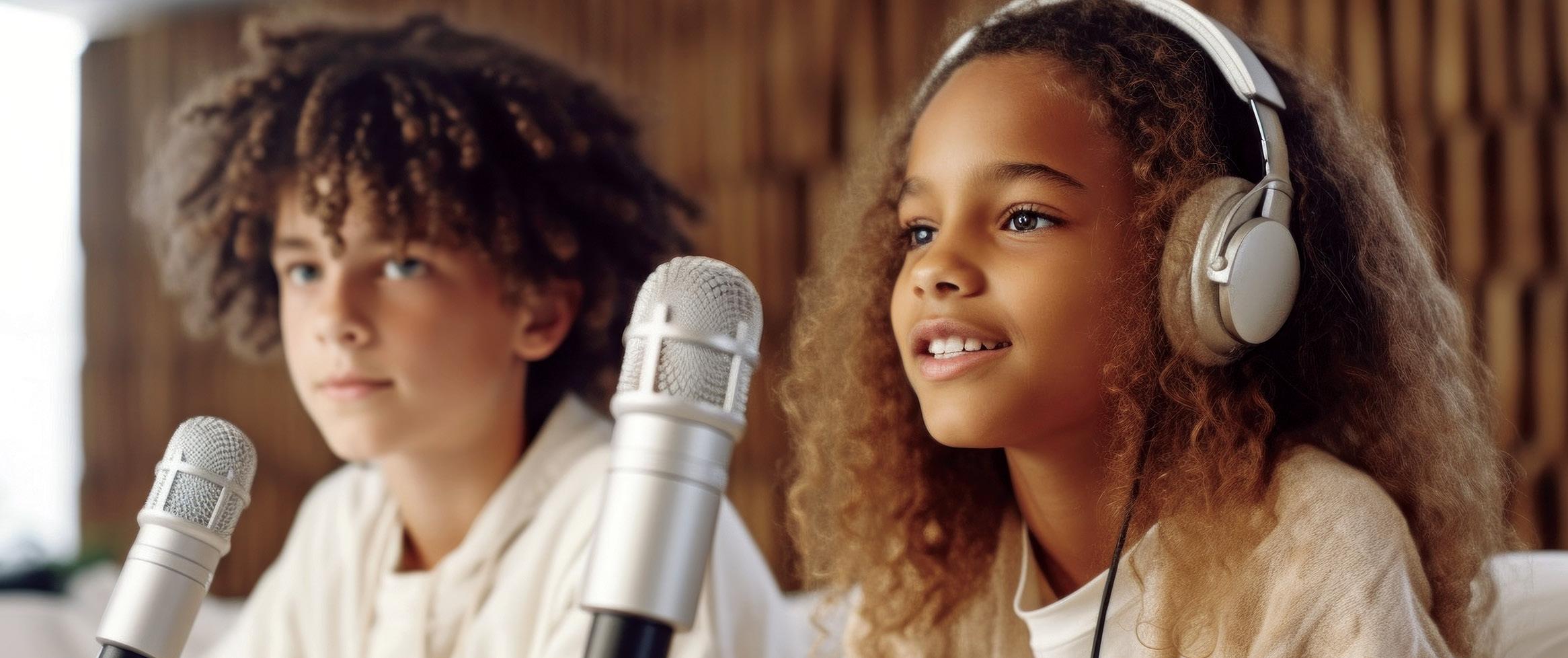
But beyond the creativity, podcasting with your child is a surprisingly meaningful way to deepen your bond. It invites teamwork, shared laughter and long stretches of focused time together—something that can be rare in our busy lives. Kids love being heard and taken seriously, and podcasting creates space for both. It also opens the door for emotional literacy: through characters and stories, kids can express feelings they might not
Embrace improv using the “Yes, and…” rule. This classic tool from improvisational theatre keeps stories flowing without shutting down ideas. When your kid says something unexpected— like “my character is a jellybean with laser eyes”—don’t correct it. Say: “Yes, and now the jellybean has to save the
• Website: Podpage builds a professional-looking site with no tech stress—it auto-updates when you release new episodes.
•Networks: You can also explore kidfocused podcast networks if you’re looking to expand your reach. Some are open to pitches from indie creators.
4. Make It Short
Five to 10 minutes is ideal. Kids’ attention spans are short—and so is your editing window. Short episodes make it easier to stay consistent and keep things fresh.
5. Snacks Are Your Executive Producers
Hungry kids don’t podcast well. Keep snacks handy. No further explanation needed.
6. Sound Effects = Instant Joy
Encourage your kid to make their own sound effects—squawks, creaks, burps, explosions. Homemade audio chaos is part of the charm.
7. Use Podcasting to Build Emotional Literacy
Let characters explore big feelings: jealousy, frustration, bravery, friendship. Through play, kids naturally learn how to express and name emotions in a safe, playful way.



8. Create Recurring Bits
Repetition builds routine and it’s comedy gold for kids. Use a silly catchphrase like “By the power of Pickle Pants!” or add a “word of the day” that triggers a special sound. It gives structure and makes the experience even more interactive.
9. Release Expectations, Not Just Episodes
Some weeks, you’ll record three episodes. Some weeks, none. It’s okay. Don’t measure success by productivity. You’re making memories, not a media empire.
10. Start with What They Love
Ask your kid what they find funniest, coolest or silliest. That’s your story seed. Our show started with a single bedtime giggle fit—and grew from there.
11. Make a Goal, not a Deadline
12. Follow the Feedback
If listeners love a character or catchphrase—lean into it. Ask your kid what they enjoy most, too. Let your podcast grow as they grow.
A flexible schedule is your friend. Set a goal like “10 episodes this season,” but don’t stress if life delays you. Podcasting with kids happens on kid time.
And most of all—have fun with it. Podcasting with your child isn’t about going viral. It’s about showing up, being silly and creating something together. Years from now, you’ll be able to hit play and remember exactly who they were, and who you were—right there in the blanket fort with a mic and a snack.
Asta Mail and her daughters, Sayla and Savea, created The Penny and Joe Podcast, which you can find on Spotify and Apple Podcasts.












Every Weekend in october 10 am to 4 pm


This might seem like a silly question, but it is one successful blogger and mompreneur Natasha Mills had to ask herself during her transition from an over-worked sales rep to a successful blogger, influencer and brand ambassador.
Mills (or @mommamillsblog as she is known to her more than 46,000 Instagram followers), shares the ups and downs of her journey to make a career pivot, find purpose and evolve into the role of “mom” as a recovering high achiever.

As an only child, I craved praise from my parents. Throughout the school years, my worth felt dependent on the grades I got. After that, validation and wealth came in the form of doing a good job.
The job? A sales career that began one month after graduating university. I received a bachelor’s degree in psychology with a business minor and then landed the title PepsiCo sales manager for Vancouver Island.
For seven years, I drove the island, setting up displays in grocery stores for every season from spring to Super Bowl. I had no commission structure as an incentive to push hard. What drove my ambition was a reliable salary and the chance to grow within the company, but what happened next rocked me.
I surpassed sales targets and worked innovatively, earning myself the reward Sales Manager of the Year. Soon after, a promotional position became available on the mainland. I interviewed well for it, but the job went to someone already living there who was less qualified. This rejection crushed me.
From that point on, I just existed in the role and drove the Island without a spark. I wanted to leave Victoria and started interviewing with various companies, but then I met my husband.
For the first time in my life, I felt the steady hand of someone I could see forever with. We fell in love very fast, moved in together, and I got pregnant within five months.
When I held my first-born and felt his beating heart against mine, I was born again. I felt a passion light up inside me that I didn’t know was possible.
Continuing with the sales role, I felt the growing monotony of tedious, unfulfilling work and decided that I desperately needed a creative outlet. I loved to write, and I loved being a mom, so I published a blog to share about the things I was going through, from mental health to navigating potty training. The signs were there to leave the job, but I ignored them. However, the universe has a funny way of making you leap when it’s time. The company did some major cutbacks, and I was let go on a severance package.
I had my son, my love and a new passion project with six months to explore my blog and social media opportunities while being financially insured. I loved the creativity to express myself online, both through images and video, but especially through the authenticity of writing. I got to show up
in a way that felt so liberating, while also applying a skillset from corporate to make brand deals and collaborations. Money wasn’t coming in fast enough though, and the time had come to job hunt.
I landed a job in a new industry of medical device sales and doubled my previous salary. It was a cut-throat industry of demanding travel and sales targets.
Then, just as I was starting to feel “wealthy,” the world shut down for the pandemic and I found out I was expecting twins.
Everything seemed to crash down around me in both terror and disbelief. Once the twins entered the world, I saw life through a very different lens. I experienced undeniable bliss, but also staggering exhaustion and isolation. I felt compelled to share real and raw emotions from the heart— connecting in solidarity with a broader motherhood com munity online.
My following started to grow, and I felt another fire light up inside of me. I channelled that same ambitious drive that I had from corporate, to promote myself into a world of entrepreneurship.
I’ve had four successful years of progressive growth with aligned brand partnerships and even created an online course for aspiring digital creators. Since deciding to go all in and decline going back to the path of financial certainty, I’ve always asked myself, what does wealth mean to me?
I realized that from the standpoint of career, it’s having the freedom and flexibility to evolve in ambition, while priori tizing motherhood first. It’s in sharing my messy, imperfect truths—and being accepted, just as I am.
Wealth is when I’m present with my children, grateful for their health and all the memories we hold in our hearts. Wealth is having a loyal, loving husband to share every sea son of the journey with.
Wealth to me, is having the most important title of all: Mom.

Natasha Mills is a twin mom of three living and raised in Victoria for over 30 years. She is a published author in the parenthood space and a full-time digital creator on social media. Find more of her content at @mommamillsblog.


Homeschool was not part of the plan. In fact, I loved my daughter’s school—its vibrant staff, inclusive values and strong community gave me comfort, especially as a parent raising a child with diverse needs.
But by Grade 2, gentle mornings and play-based learning gave way to measurable outcomes. Recesses would be spent alone, while cliques formed and rules of the playground shifted. It was heartbreaking to watch. By Grade 3, the pressures of keeping up academically and socially started to chip away at her mental health.
Meltdowns and shutdowns became daily struggles. That distant, glazed look returned—along with subtle eye twitches we later learned were absence seizures quietly disrupting her learning. Reading and basic math felt heavier each day. Getting out the door became an emotional marathon.
We were overcome by frustration and defeat, desperate to help her but unsure how. The tension changed the dynamic of our family and impacted our confidence as parents.
The real eye-opener came with the pandemic. When classrooms closed, we all felt an immediate sense of relief. And as much as I valued her school, we knew it was no longer the right fit for her or our family.
So, when schools reopened, we made the pivot.
Instead of asking, “Will she ever finish this?” I started asking, “What does she need from me?” I listened closely, studied her cues and quietly accepted that homeschooling might soon become our new normal.
That shift, from compliance to connection, became our family’s wellness turning point.
Homeschooling wasn’t the plan—it was the lifeline we never knew we needed. At first, I worried: “Would she fall behind? Could I even do this?”
But deep down, I knew we couldn’t focus on academics until we prioritized her well-being.
So, I stopped doubling down on curriculum and leaned into emotional co-regulation, confidence-building and creating a space where she felt safe to be herself.
Fewer worksheets. More connection. Less grading. More grace.
Homeschool allowed us to work with her natural rhythms. If she needed a slow morning, we honoured it. If math called for baking banana bread, we pulled out the mixing bowls, put on our matching chef hats—and recorded the whole debacle for reporting purposes. Writing initiated by voice notes? Sure! Problem-solving with headphones? Absolutely.

Movement breaks, sensory tools and emotional check-ins became part of the plan. She began to thrive. And that mattered more than any textbook.
I thought I needed to be her teacher. What she really needed… was her mom.
I let go of perfectionism, urgency and unrealistic expectations. I made peace with good enough, forgave myself for the chaotic days and modelled for her: mistakes are okay, rest is productive and safety always comes before success.
This wasn’t just her growth—it was mine, too.
One of the biggest surprises? How much joy surfaced when we simply lowered demands.
Without school timelines, we made room for mid-morning beach talks, reading Manga-style Anne of Green Gables under
shared blankets, homemade sushi, fashion design and Taiso exercises woven into a Japan unit study.
We laughed more. We cried less. Learning began to feel like living again.
both)
As power struggles faded, my daughter slowly came back to life. She spoke with more confidence, expressed herself freely and moved through mornings with less resistance. I got my quirky, imaginative girl back.
And I began to feel like myself again. With a formal diagnosis and a support team in place, I could finally delegate parts of her learning. This made space for me to care for my aging parents—and return to the studio. She even joined me, eventually volunteering for the podcast.
In choosing a new way to educate her, I found a new way to reclaim myself.
Prioritizing relationships over routine wasn’t easy—but es sential.
Our home became a place of repair, not reaction. We rebuilt trust, redefined success and reshaped what learning looked like—not just for our daughter, but for our whole family, in
Need support making your school more inclusive?
Create accessible classrooms, playgrounds and sensory spaces
Get adaptive school equipment
Funding available for public and independent schools in BC

cluding her younger brother who continues to thrive in public school.
Now, after a few transformative years, my daughter is returning to brick-and-mortar high school—with accommodations and supports in place.
Homeschooling gave her the space to feel safe in her own skin—and gave me the clarity to stop chasing my version of learning that never truly fit. Once we let go of what learning was supposed to look like, we made space for her to grow… in her own time, in her own way. That’s when healing began—for both of us.
Because when we lead with connection, learning has a chance to follow.
Deb Balino is a Victoria-based writer and mom of two, navigating life in the sandwich generation. She’s the


September always sneaks up on me. The last week of August stretches out with picnic dinners, popsicles in the backyard and fluid bedtimes. Then before we know it, we’re straight into field trip permission forms, bell schedules, lunch packing and carpooling to sports practice. The transition from summer freedom to the back-to-school routine is a shock to the system for both me and for the kids.
I’ve tried all kinds of strategies over the years to make the back-to-school period feel smoother. Some work temporarily, others flop immediately. This year, I’m revisiting a few tactics that focus on slowing down and staying connected.
Full transparency, I’m not an expert.
I’m just a parent trying to keep it together until Thanksgiving without wishing away the fall. Here are a few of the small habits that make a big difference for our family.
Walking is my favourite way to kick off the day, so we walk to school whenever possible. If walking the whole way isn’t doable for you, try parking a few blocks away. That movement and fresh air gives us a few minutes of calm before the day kicks off. There are few distractions besides a darting neighbourhood cat. We chat about the day ahead, while a little hand finds its way into mine. Walking is a great way to create connection
between the morning rush and the day ahead.
Laughter is the best medicine they say, so I intentionally try to get laughs out of the kids each day, usually after school when they’re tired and need to release. I make a silly face, bust out a ridiculous dance move or crack a cheesy joke. It feels forced initially but once you get them going, you’ll find yourselves genuinely laughing and the sound of those giggles melts the day away. If bad jokes and pulling faces fail, try gentle tickling or asking for them to tickle you.

Ten minutes of reading can sound like a lot but when you make it a habit, it sticks. Whether it’s a picture book, a chapter of a novel or a story they wrote at school, sitting together helps us wind down and share an interest. Cuddles are almost guaranteed when you read together, even if it’s a car magazine about the SUV of the year, which is my son’s current literature of choice.
A messy house creates feelings of chaos. Cleaning up before bed was becoming a battle I was losing when I realized the marketing of it needed work. Words like “tidying” or “cleaning up” never land well but when we rebrand it as a “reset” and add music, the energy shifts. We take turns choosing a song and for the duration of it, we “reset” the house, putting things back where they go. It’s amazing how different the space feels after four minutes of concentrated “resetting.” Plus, a lively song at a generous volume can get a great vibe going.
September will always come with a little chaos and recalibration. As I thought about the elements of summer I wanted to bring into the school year, it wasn’t the frozen treats or the long evenings, it was the slower pace and the moments in between activities. With these few simple habits, I’m hoping to prioritize connection over perfection, with the hope that some calm balances out the inevitable rushed mornings and search for lost lunch containers.
Jenn Wint is a writer and public relations specialist passionate about sharing stories that connect people, communities and local businesses. She lives with her husband, son, daughter and two kitties. Follow her @jenn_wint.





It’s hard to believe that five years have passed since COVID abruptly upended our lives. Since then, there’s been war, inflation, wildfires and a whole lot of “global instability,” as the euphemism goes. Little did we know that the “unprecedented times” would just keep going.
COVID, and the lockdown period, was an incredibly challenging time. Yet sometimes I look back at the silver linings: the unscheduled family time, the regular calls to family abroad, the pancakes on weekdays. The pandemic also brought us some coping strategies. These strategies are still useful, but some have fallen by the wayside as life’s stressors have shifted from panicking about toilet paper to being terrified of Trump.
Here are a few lessons from COVID that can help us as we move into the continually unpredictable future:
Do you remember huddling around a backyard firepit in a puffy jacket during the cold spring days? Going on socially distanced walks to catch up with friends? During lockdown, my life revolved around the weather and which parks I could visit. I discovered new local gems in my efforts to find “beauty spots” without many visitors.
I recently took my daughter to the optometrist. She recommended that kids spend two hours everyday outside.
Apparently, our eyes need to be exposed to bright lights that only exist in nature. I feel like the two hours outside rule is a good one for life, not just our eyes. Whether it’s walking, going to the playground or paddleboarding—time outside nourishes us.
Remember at the beginning of the pandemic when all anyone would do was FaceTime each other before we got sick of screens? When one person would make sure everyone in the family got groceries? When we all asked, “How are you doing?” and talked about how strange everything was. Everything is still strange but now we’re busy again. I find myself assuming that friends are talking to someone else about how they’re doing. We’re back out in the world again—but is anyone okay now that the regular “coffee break” calls have stopped?
Remember the kids throwing tantrums in Zoom calls and cats popping their heads up during staff meetings? Remember how you never knew who your colleagues lived with before COVID? It was nice to see our coworkers transform from a cog in the machine to a multifaceted human being. Linda in HR went from the neurotic emailer to the gardener with a
backyard sanctuary. Zoe in accounting ducked out of meetings to help her mother-in-law who was suffering from dementia. During COVID, the importance of staying home, getting vaccinated and washing your hands was also a stark reminder of how we’re all interconnected. How we rely on each other not only to live—but to thrive.
Those first couple months of COVID felt like an eternity. Yet, looking back, I couldn’t remember what happened when. Did nana come by and sing a song outside our balcony during the first lockdown or a subsequent one? When did we first discover Music with Drew on YouTube?
In retrospect, so much is a blur—making cookies, the balcony visits, singing “She’ll be Coming Around the Mountain” in grandpa’s backyard… It was all wash, rinse, repeat until grandma was allowed to visit from Vancouver, and we spent the day at the beach building sandcastles. I remember that day because it was different. Routine is important, but everything is a blur when we do the same thing day-in and day-out.
Thinking back to the early days of lockdown, I can’t believe we lived through it. There was a time when we didn’t know whether we could hug people again, didn’t know if it was safe for grandparents to see grandkids, didn’t know when we
could board a plane. There was a time when our “bubbles” were so small, when we missed sitting in a coffee shop surrounded by strangers, when we realized that Netflix isn’t a replacement for having a social life.
There is much to be thankful for now that the pandemic has receded. Let’s enjoy the simple things like indoor birthday parties, regular school days, sitting in a Dairy Queen with a Blizzard. We’ve come a long way, but it’s still worth reminding ourselves that when the going gets tough, sitting by the ocean with a friend helps, texting grandma helps, seeing each other as multifaceted people helps. I’m glad the “learning experience” of COVID is largely behind us—even if there are other challenges.
It’s time to make some memories again.
Julia Mais is a policy and communications professional in Victoria. She looks for beauty in the everyday through writing, photography and the outdoors. She lives in a messy, cheese-filled home with her husband and young child.


Parties They’ll Actually Like (That Won’t Break the Bank!)
Remember when we were growing up and birthday parties were just balloons, hot dogs, cupcakes and maybe a game of “Pin the Tail on the Donkey?” A “super memorable” party was when pizza was ordered from the best place in town! But now you’ve got a tween or teen who rolls their eyes at all your suggestions for a birthday celebration.
The good news is that you can throw an awesome, ageappropriate birthday party without renting a limo or selling a kidney. With the right setup (and just a little bit of creative flair), even a party at home can be cool again.
Think “glow-up spa night,” “epic video game battle” or “DIY bubble tea + bracelet bar.” Nothing too cutesy, just a loose vibe that feels fun and not cringey.
Give them a budget, some Pinterest inspiration and let them make the calls. The more ownership they have, the more excited they’ll be and the less they’ll act like you’re ruining everything.
You don’t need to redecorate your house, just tweak the atmosphere. String lights, photo backdrops or snacks in TikTokworthy setups create an instant vibe that will make everyone want to take and post all the pics.
Need some specific ideas to make your home into a space people of all ages will love? We’ve got you:
• Have an Outdoor Movie Night – Projector, popcorn and blankets make an instant win.
• Put Out a Make-Your-Own Pizza & Sundae Bar – All you need is food and their creativity. This one is zero effort for you (except cleaning up!).
• Epic Spa Night – Sheet masks, cucumber water, nail polish and a speaker = happy teens.
• Create a Backyard Glow Party – Glow sticks, neon lights, outdoor selfie stations and maybe some fun outdoor games.
• Host a Murder Mystery or Escape Room Challenge – Buy a printable kit or DIY one.
• Creative Hangout Night (something for everyone!) – Paint tote bags, make bath bombs or try Polaroid journalling.
But what if your home is small, or your kids just don’t want to have their friends in their own space? Here are some great spots that don’t break the bank.
1. Swimming Pools. Most indoor pools have slides, wave pools and offer “party packages” that include swimming and a party room perhaps with some activities. If budget is a big factor, you don’t need to book the party room—just pay for the pool admissions then hand out post-swimming cupcakes in a nearby park.
You’ll often find the same deals at ice skating rinks and bowling alleys around town.


2. Movie Nights. Cineplex or Landmark Cinemas offer group rates (or grab the discounted ticket packages from Costco), and you can do the same cupcake trick as above or hit a nearby bubble tea place after.
3. Art or Craft Studios. Dedicated art spaces like 4Cats Studio or even community centre nights are perfect for hands-on fun. Everyone goes home with a masterpiece—and maybe a new skill.
4. Board Game Cafés. Board Game Cafes, some pizza places around town and even some community centres offer evenings that combine food and games to make a fun, social party.
5. Head to a Park. Picnic at the top of PKOLS, Beacon Hill Park, Maffeo Sutton Park, Transfer Beach or one of the other amazing parks or waterfront locations around the Island. Plan a fun teen-themed scavenger hunt or just set up some selfie stations.
Remember that birthday parties don’t have to be over-thetop to be memorable. Give your teens a little control, a space to be silly and maybe some pizza and it’ll be a huge hit. Whether you go full party-planner mode or wing it with a backyard glow stick dance party, the goal is simple—make them feel celebrated without totally losing your mind (or draining your bank account).



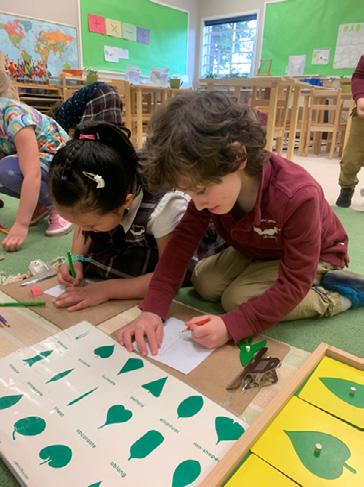


In today’s times, many members of one family live in different cities or even other countries around the world.
Our sweet grandchildren live in London, England, an ocean and more than 7,000 kilometres away. How can we stay in touch and be a part of their lives? We treasure our visits, and travel together, including a weekend trip to Bath, and a cruise on the Thames River. We explore their neighbourhood parks, go for walks, share ice cream, read and do puzzles together.
When they visit us in Victoria, I look for fantastic parks and other activities in the area for us to go to. Gyro Park is a fun place with a sunny beach, pirate treasure island, playground, zipline, climbing ship and gigantic colourful creatures like the Cadborosaurus, octopus and whale.
Other favourite beaches and hikes include Willows Beach, Swan Lake, Beaver Lake, Elk Lake and Witty’s Lagoon. Water parks at Carnarvon, Beckwith, Uptown Mall, Rutledge Park and Esquimalt Adventures never cease to thrill. Several recreation centres have indoor pools and skating rinks. Local libraries offer books, videos and reading programs. There are
many workshops in music, art, drama and dance offered in every district.
Beacon Hill Park is a fabulous place with its petting zoo, playground, entertainment, and a giant watering can to cool down under. Downtown has Courthouse Playground, buskers at the Inner Harbour, Miniature World, The Bug Zoo, The Board Game Café, The Puzzle, Quest Reality Games, The Haunted Manor indoor mini golf, the Dino Lab and the Underground Donut Tour.
Imax and The Royal BC Museum offer interesting films and displays. Tally-Ho Carriage Tours, Pedaler Cycling Tour, walking tours, riding on a Victoria Harbour Ferry or a double-decker bus are unique ways to see the city.
For the more adventurous, take a three-hour sail on a tall ship, a Harbour Air flight, a whale watching trip in a zodiac or a hot tub tour (seriously).
History comes alive at the Legislature, the Empress Hotel, Rogers Chocolates, Fan Tan Alley, Chinatown and Craigdarroch Castle.
Festivals delight, including the Highland Games, Awakening Chinatown, the Victoria Day Parade, Oak Bay Tea Party, Canada Day picnics, Symphony Splash and Dragon Boat races. Summer brings many free concerts in parks across the region. Mini-golf courses can be a blast, as well as berry picking and visiting ice cream spots.
On the peninsula, Heritage Acres pioneer village and train are great for exploring, as are Iroquois Spray Park and the Shaw Centre Aquarium in Sidney. The Aviation Museum with gigantic Mars water bomber enchants.
Butterfly Gardens in Brentwood is an exotic experience, and the Country Bee Honey Farm with animals to feed is fun. Famous Butchart Gardens has a merry-go-round, and in the winter, a hunt for the 12 days of Christmas.
Fall fairs like Saanich Fairgrounds and Luxton are popular. Further afield, the Splash Pad at Colwood Creek, Langford’s Glenn Lake Beach Park, Centennial Spray Park and Leigh Place Beach Park are worth the trip. Wild Play on the Island Highway kids zone has ziplines and other fun adventures. The Malahat Skywalk is a family adventure with magnificent views.

When they aren’t visiting you, Zoom is a great way to interact with children far away, hear their giggles and watch them grow. I’ve made quilts and sent toys, books, cards, birthday banners and Christmas stockings. Special t-shirts, hats and shoes, even things I’ve saved from their mother’s childhood, make welcome gifts.
I’ve made my grandchildren a photo album of our family. Now, I’m writing stories in a keepsake book my daughter gifted me. Each page has envelopes with questions that you answer in letter form.
We can’t always live close to our grandchildren, but we can bridge the distance with creativity, care and connection to show them how much they are loved.
Rosalie Jones has written three children’s books that have received Greater Victoria Public Library awards. Her books including My Little Owl, Robins and Friends and The Bear in the Bush are available by emailing knogler@shaw.ca.



Congratulations on your pregnancy!
This is the third part of a five-part series about the trimesters of pregnancy. We will visit each of the three-month blocks and talk about the information, tasks and ideas that belong to that special time before baby arrives.
pokes you give your tummy. Some babies will poke back!
As your uterus gets bigger, you will notice painless (but uncomfortable) tightening or Braxton Hicks contractions. These practice contractions massage the baby and ensure good circulation to the

The third trimester (weeks 29 to 40) is the time when many pregnant parents start to feel uncomfortable. You may feel big and swollen; your back may be sore. Your body is sending you a lot of messages: slow down, take it easy, relax. Be kind to yourself and your baby. By now, your baby can hear the sounds of your life. They are learning to recognize your voice and the music you play. Baby can also perceive light through the wall of the uterus and feel any pats and
uterus. They do not mean that you are going into labour.
Heartburn is another frequent side-effect of pregnancy around now. It’s caused by progesterone, which slows your digestion and allows for more nutrients to be absorbed for your baby. Try eating frequent small meals and not lying down after you eat.
Many pregnant parents don’t think a lot about labour and birthing until this
trimester. That’s just fine. There’s lots of other stuff to think about. As you start to think about getting the baby out, you might want to watch some videos or read some good books.
• Mothersadvocate.org/videos.html is good place to find excellent birth videos.
• The Birth Partner by Penny Simkin and Melissa Cheyney is a great evidencebased source of information on labour and birth.
During this stage, your care-provider will:
• offer you the option of being screened for Group B Strep.
• want to see you every week after week 36.
• check for the position of your baby to screen for breech or other variations in presentation—head down is best!
• want to hear about your preferences for birth and answer your questions, so make sure you ask!
Meet with your doula if you have chosen to have one. They will want to know about your plans and preferences for your baby’s birth so they can support you. Attend your Prenatal Childbirth Preparation Classes with your partner or birth- helper.
Take a Baby Care or Parenting the Newborn Class. Organize equipment, supplies and a space for the baby. Remember babies don’t need a whole lot, but gathering items is part of the process of getting ready, emotionally, as well as logistically!
Start planning for the fourth trimester! Think about who will be available for physical support right after the baby is born. Your partner? Birth helper? Family? Friends? Post-partum Doula?
Plan meals for after the baby comes. Cook and bake and freeze. Tell a friend about MealTrain.com.
Learn about Postpartum Mood Disorders. Where can you find help if you need it? About 20 to 40 percent of birthing parents are diagnosed with some mood disorder (anxiety or depression) after giving birth. Support makes it all easier
to deal with. One helpful resource is the Pacific Post Partum Support Society (postpartum.org).
Consider your preferences and values with regards to your baby’s birth. How would you like to cope with labour pain? What interventions would you like to avoid, if possible? What is important to you about the experience of giving birth? Discuss and share with your partner or birth helper.
Take a little time off to rest and enjoy the calm of a child-free house before everything changes. Try not to work until the last minute. Becoming a parent is a rite of passage and requires a little pause, an interruption in your usual life, for you to prepare mentally.
On the other hand, having a baby is not the end of your life. You will still be able to do many things. I see some parents-to-be shopping as though they were preparing for a siege. Shopping is a great activity to do with a baby (after the first few weeks).
Enjoy your partner. Talk to each other and take the time to strengthen your relationship. There are difficult days ahead and you need a strong team to get through them. Do cozy pleasant things together. Go out to a movie on a whim. Go for long leisurely walks. Have a fancy dinner out. You will be able to do these things together again someday, but not right away.
This is the third installment of a series about the five trimesters of pregnancy. Check the next edition of Island Parent for more about how to thrive through your early parenting experience.
Eva Bild is a childbirth and lactation educator and grandmother. She is the founder of Mothering Touch, where she facilitates Baby Groups on Tuesday and Thursday mornings. Learn more at motheringtouch.ca.


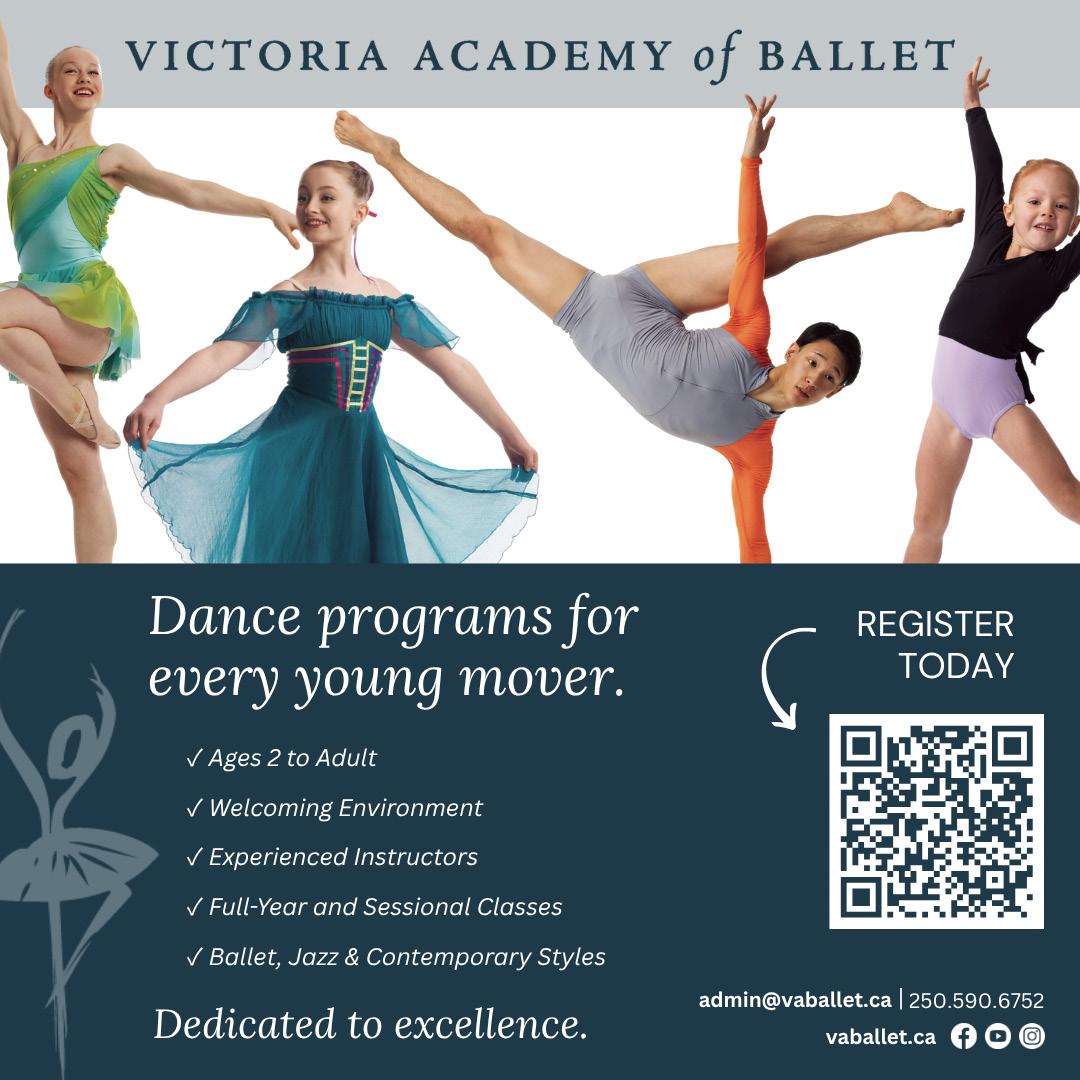
Can you recall a friend from childhood? Did this friendship help you grow? What was it about this friendship that was magical? It’s difficult to think of childhood without thinking about friendships. Friendships guide, support, teach and sustain us as we are growing up. These early bonds are often the first steps we take in learning empathy, trust and the complexity of hu-
models. There will always be outside pressures that parents will not be aware of, so it is critical to anticipate challenges and to do our best to provide support when these challenges arise.

As children grow, the outside world inevitably intrudes. Pressures can come from all different directions: from peers, the adults in their lives, social media, through competition, social norms


also create opportunities for change, as friendships can help to build bridges across these divides. Parents and educators can use this visual of bridge building by teaching accurate histories and helping children reflect on fairness and respect. This also includes modelling curiosity and asking questions respectfully.
With this tool, parents and educators can support children to learn about each other’s cultural backgrounds, traditions, values, spirituality and perspectives. These processes help to challenge stereotypes and inherited beliefs and nurture a better future.
Reading stories about children’s friendships that bridge cultural differences, can be a powerful way help children learn that friendship isn’t always easy, but that kindness and understanding can carry them through rough moments. Through stories that reflect diverse voices and experiences, including those of Indigenous communities, children begin to recognize both shared humanity and the strength in difference.
An example of a friendship that builds bridges is in the novel Two Tricksters Find Friendship by Johnny Aitken and Jess Willows. This story focuses on the strong friendship that two fourth graders—an Indigenous boy Johnny and a non-Indigenous girl Jessie—form. They face outside pressures and prejudices about their friendship. But with guidance from Raven, a trickster and wise teacher in many Indigenous stories, and TwoSpirit spiritual teacher Steven, the two friends learn to celebrate and lean on each other. The land is an important character in this story as well; it connects the characters and enables their friendship to grow through their shared curiosity. As they explore and learn about the land beneath their feet, they are learning about each other. Common ground develops between the characters that sustains and supports them from their very first moment together.
The authors based the characters in the book on their own close friendship and imagined how their friendship may have begun if they had met as children. Acceptance, celebrating relationships with extended family and finding strength through friendship are key themes highlighted throughout the book. Additionally, the story models how to ask questions respectfully and kindly about a culture that is not your own through Jessie, who is curious about Johnny’s culture.
Recalling your childhood friendships and the activities that you engaged in can help to support your children navigate these relationships. Remembering that as adults, we often recall the best and the worst of our friendship experiences, can help to put in perspective the importance of our own learning and growth. By supporting and encouraging these early friendships, we can help guide the next generation of bridge-builders moving forward.
Two Tricksters are Johnny Aitken and Jess Willows. They are both full-time residents on Mayne Island. Johnny is an interdisciplinary artist and community leader who identifies as a 2Spirit with Coast Salish and Scottish lineage. Jess identifies as a Settler and is passionate about teaching and learning.

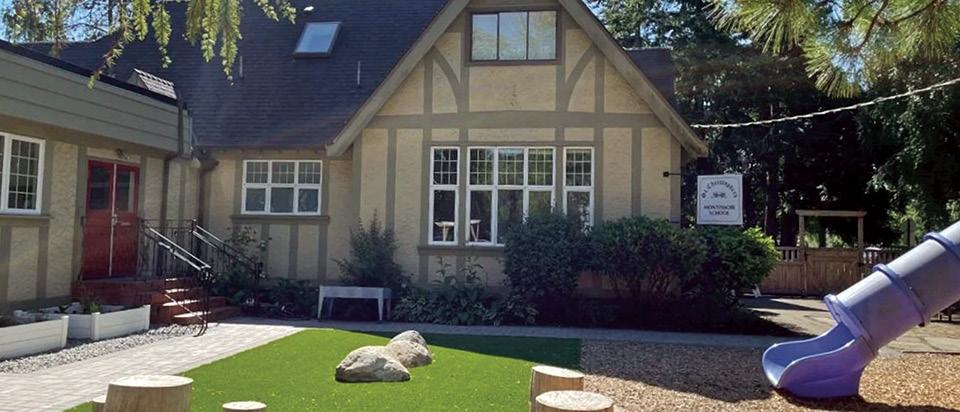




Each creative activity prompt is an opportunity for your child to embrace a new challenge. Through hands-on learning, your child is more likely to remain engaged and to build upon their creative problem-solving skills. Register today for September 2025 enrolment for 3 & 4 year olds stcmontessori.ca 250-595-3213 2619 Currie Road, Victoria, BC V8S 3B9 Now receiving the new CCFRI (Childcare Fee Reduction Initiative)
Back-to-school season is more than just the return to routines and packing lunches. It also brings many mixed emotions to the surface. Conflicting feelings like excitement and nervousness, fear and bravery, hopefulness and disappointment will rise suddenly like waves and merge forcefully together like currents. Mixed feelings experienced together can be overwhelming, especially for our kids who are still learning how to cope. Suddenly, what should feel like a fresh start can turn into meltdowns over misplaced shoes or sibling squabbles before 8am. It’s not long before everyone in the house is feeling caught in an emotional storm. As a family counsellor and a mom of three, I know how contagious emotions can be, spreading like the flu from one family member to the next.
New seasons bring new stressors and both kids and parents can feel the emotional intensity that comes with change. When your child is falling apart because they didn’t like their lunch, it’s important to understand that these aren’t just random blowups. These are moments of dysregulation, when your child’s nervous system is overwhelmed and their emotions have taken over.
And parents? We get pulled into that storm too. Maybe you stayed up too late, have a full day ahead and you were already running on fumes when the meltdown hit. Suddenly you’re snapping, threatening consequences you don’t mean or withdrawing completely, just to survive the moment.
If you fall apart sometimes, take heart, you’re normal! There is a way through these moments when you understand what’s really going on for you and your kids.
When kids are “falling apart,” it’s not because they’re spoiled or trying to manipulate us. It’s because their developing brains aren’t wired yet to manage big emotions on their own. The part of the brain responsible for self-regulation, the prefrontal cortex, is still under construction well into their 20s.
In moments of stress, kids drop into their more primitive brain centres, and you are seeing their stress response of either fight, flight or freeze. What they need most in these moments is not logic or discipline, but co-regulation: a calm
adult to anchor them. When we stay emotionally steady, we give our kids’ nervous system something to mirror. That’s how emotional wellness is built.
Here’s the good news: you don’t need to be perfect. You just need to be present. Your presence and your tone of voice can do more than any perfectly crafted parenting script.
Try this three-step approach the next time your child is unraveling:
1. Pause and Breathe. Before you respond, take a slow breath. Feel your feet on the floor. This one second of grounding helps you access your own regulation.
2. Validate and Acknowledge. You might say, “That sock really is bothering you,” or “You’re feeling so upset right now.” You’re not agreeing with the behaviour, you’re naming the feeling. This helps your child feel seen and safe.
3. Offer Connection Before Correction. Once the storm has passed, then you can talk about what went wrong and how to do it differently next time. But in the heat of the moment, what your child needs is your calm.

This is the part we don’t talk about enough. Parents are often told to “stay calm,” but not shown how to do that when we’re exhausted, triggered or carrying our own emotional baggage.
One of the most important tools is self-awareness. Start noticing your early warning signs: clenched jaw, rising voice, tension in your chest. These are cues that you need a moment of regulation.
When possible, narrate what you’re doing out loud: “I’m feeling overwhelmed too, so I’m taking a breath before I say anything.” This models emotional regulation and gives both of you space to reset.
Falling apart safely doesn’t mean avoiding big emotions. It means creating a family culture where emotions are allowed to exist, be supported and moved through. That’s what builds resilience.
Emotional wellness isn’t about having it all together. It’s about knowing that repair is always possible. When you model repair by circling back after yelling, or saying, “That was hard! Want a hug?” you teach your child that mistakes don’t define relationships. Connection does.
So, as you navigate this back-to-school season, remember: It’s okay if your child falls apart. It’s okay if you do too. What matters most is finding your way back to each other.
That’s where resilience is built. That’s how families grow stronger. And that’s the heart of raising emotionally healthy kids.

Darcy Harbour, MA, RCC, is a registered clinical counsellor and the creator of Chaos to Calm, an online parent support program that helps families build emotional resilience and stronger connections. Learn more at harbourfamilycounselling.ca






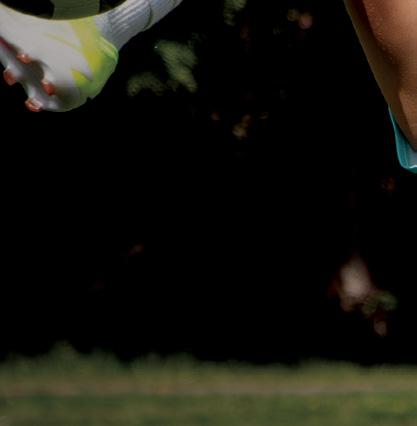



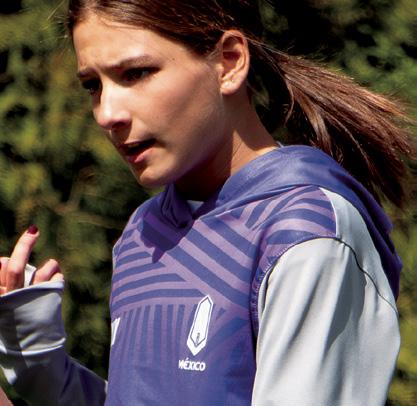





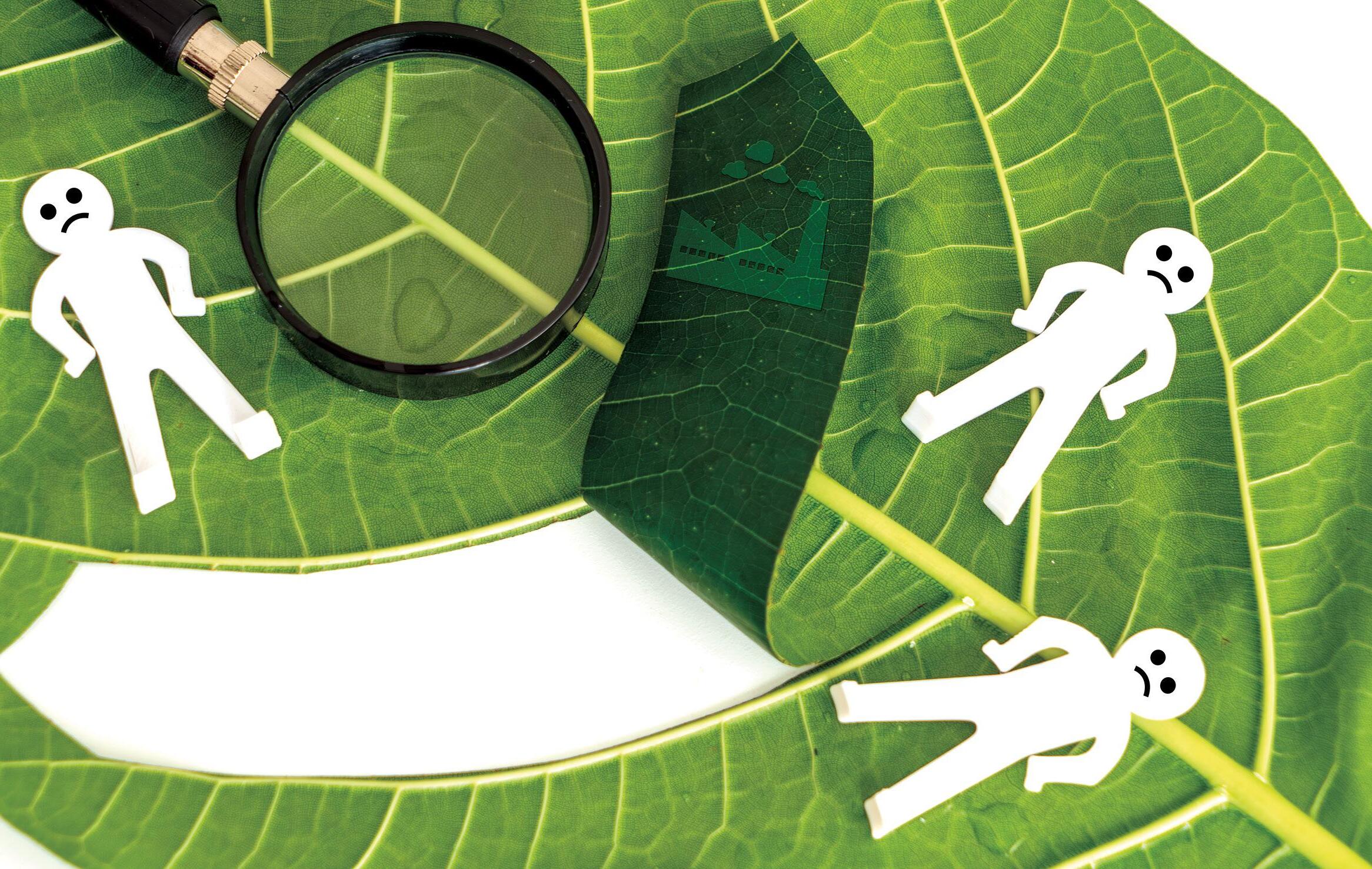
Editor’s Note: This article is not written by a mental health professional. If you or a young person in your life is struggling with intense anxiety or eco-anxiety, please consider speaking with a qualified mental health provider.
In the programs Sierra Club BC runs across K–12 classrooms, I’m hearing growing concern from younger and younger students about the climate crisis. One moment I distinctly remember happened during a nature session with a kindergarten class. We were exploring Canadian biomes, pulling out different animal cards to discuss who lives where. When we got to the polar bear, one little girl clutched her own stuffed polar bear and asked, “Will they be okay?”
And I didn’t know what to say.
I wasn’t sure they would be. And it didn’t feel fair to lie. I felt the lump of climate anxiety swell up in my throat. But I steadied myself and said, “Well—we’ll do our best to protect them, won’t we?”
That moment stayed with me. It reminded me of my own early climate
worries—and of how urgently we need to equip children with tools not only to understand the world, but to face it with strength, creativity and connection.
Eco-anxiety, or climate anxiety, is the emotional toll that repeated environmental crises can have on the mind. This can result in feelings of fear, sadness, powerlessness and grief. For classrooms across Canada, climate concern has been turning into anxiety. Climate anxiety has been rising in young kids since the ’90s and has been documented in youth as young as preschoolers.
These feelings can sometimes lead to paralysis: “What’s the point?” or “Why try?” But even in these conversations, I hear flurries of: “What can I do?” “Is there a way to fix this?”
And I think there is.
In our programs, we approach ecoanxiety through two lenses: action and
expression. These are tools to counter the isolation and helplessness that often accompany climate concern—and they’re accessible to kids and families alike.
1. Action: Doing Something, Together. One of the most effective antidotes to anxiety is connection. When young people engage in climate-positive action, they begin to see themselves as part of a larger story—one in which change is possible.
Start in your community: Are there ways to make your school, home, or neighbourhood more climate-resilient? How can you go about creating these changes? Who can you talk to and who can you recruit? Challenging youth to re-envision the future allows them to see one with hope.
Get involved: Once this hope is created—foster it through collective change and engagement. Climate protests, cleanup days, and community events are powerful reminders that your child isn’t alone in how they feel. If there’s nothing planned—consider organizing something
small and meaningful, maybe organize with community partners!
Connect with nature: Nature walks, forest play or beach combing are grounding practices that reconnect kids with the living world they care so much about. Being outdoors has been shown to reduce stress and support mental health. These moments help children (and adults) return to themselves, breathe deeper and reset.
2. Expression: Making Meaning Through Creativity. While action connects us to the outside world, expression helps us understand our inner one. It is important to feel like part of the collective, but it is equally important to realize how special we are as individuals. Art has always been a way for people to cope with the political, social or emotional reality of the current moment in time. Now is no different. The youth in your life could be that next artist.
Creativity forms community: finding others with passions like yours makes life more full. Having your feelings exhibited in a physical piece of work, gives shape and language to complex emotions. Expressing your feelings through mediums takes them out of your body and gives a name.
It’s easy to feel overwhelmed. And in a world full of big feelings, it can be tempting to shut down. But there’s bravery in caring. Climate anxiety often comes from a deep, radical empathy for the people, animals and ecosystems we’re connected to. That care is not a weakness. It’s a strength.
So, give yourself (and the kids in your life) credit for feeling deeply. Then use that feeling to grow. Find community in others who care. Make something new. Speak up. Create beauty. Dream of a better future out loud.
And remember: “Will they be okay?” isn’t a question we can always answer. But we can say this—we are trying! And trying together is where hope begins.
Kate Sotelo is an education program manager with the Sierra Club BC. The Sierra Club BC is inspiring generations to defend nature and confront climate change, so families, communities and the natural world can prosper together. Learn more at sierraclub.ca






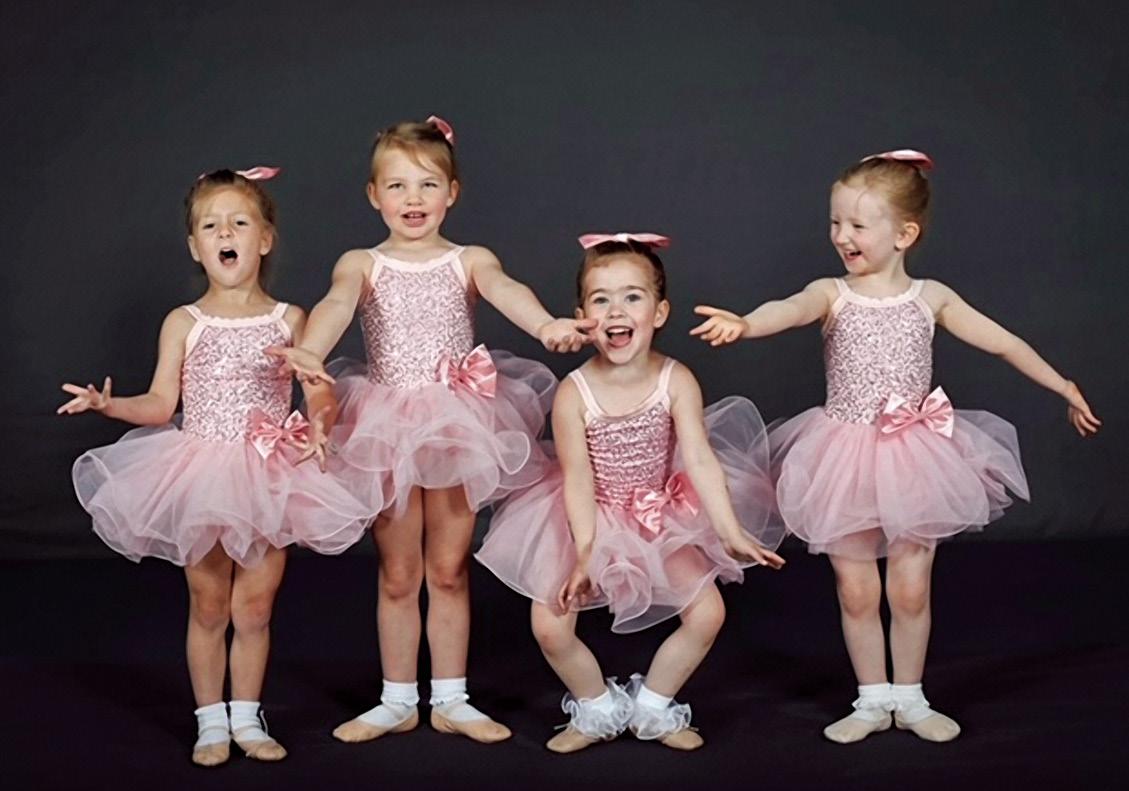
Sandwiches have been a school lunch staple since the invention of sliced bread. When I was a kid, we used to bring our sandwiches wrapped in waxed paper. The cool kids all had white bread sandwiches with chocolate spread, but that was only because the rest of us were stuck with baloney and mustard sandwiches.
My parents were creative cooks (it runs in the family)! And we had a whole bunch of quick, easy and delicious sandwich options that went beyond the typical meat and cheese. There were five of us eating sandwiches, with my dad and older brothers eating two apiece. Everyone took turns making sandwiches for the whole family.
The secret to making eight drool-worthy sandwiches is a simple and reliable filling. Here are some dips and spreads that are perfect for smearing on bread, wraps or crackers. They also double as a delicious dip.
Total Time: 10 minutes
Peanut butter isn’t always allowed in the classroom, so this is a way to add pizzazz to a no-nut butter sandwich. When I was a kid, we always grilled our peanut butter and banana sandwiches. It makes them extra gooey and delicious. To make grilled peanut butter sandwiches, butter the outside of the bread and fry like a grilled cheese sandwich.
2 pieces of bread
2 Tbsp of salted no-nut butter
1 ripe banana
1⁄2 tsp honey
Spread the no-nut butter on one piece of bread. Top with slices of banana.
If you want a bit of added sweetness, add a drizzle of honey. Spread no-nut butter on the second piece of bread and press firmly onto the bananas.

Prep Time: 15 minutes
Tuna and egg salad sandwiches are delicious, but they can sometimes be a hard sell for classroom lunches. Here is a vegetarian alternative that tastes delicious and doesn’t require your kid’s classmates to hold their noses.
1 can of chickpeas
3⁄4 cup of mayonnaise
2 celery stalks
3 Tbsp of sweet relish
1 Tbsp yellow mustard
1⁄2 tsp paprika
Drain and rinse the canned chickpeas. Place them into a bowl and mash with a fork. If you need liquid to help with mashing, add the mayonnaise. The goal is to have all the chickpeas broken apart, while keeping some texture.
Finely dice the celery. Stir it into the mashed chickpeas along with the mayonnaise, relish and mustard.
Serve as a dip with a sprinkle of paprika on top or make chickpea salad sandwiches with a piece of lettuce.
These local businesses are family-focused and committed to our community and helping you.
Wait Time: 1 hour, Active Time: 15 minutes
Olives aren’t typically considered “kid-friendly” foods, but this recipe is a favourite with every kid who has tried it. When mixed with cream cheese, the olives are tangy and salty rather than overwhelmingly flavourful. I’ve served it at tons of kid parties along with more typical sandwich options and this is always the first to go.
1 block of cream cheese
1⁄2 cup of green olives stuffed with pimento 3 to 4 Tbsp of mayonnaise
Place the block of cream cheese on the counter to soften. It will be easier to work with if it has sat out for at least 1 hour, however, don’t leave it out for longer than 2 hours as that is a food safety risk.
Finely chop the olives. Mix it into the cream cheese along with the mayonnaise. If it seems too thick, add more mayonnaise.
Serve as a cracker dip or a sandwich spread.
Total Time: 10 minutes
Looking for a refined sugar-free alternative to a commercial chocolate spread? This recipe is for you! Dates provide sweetness that’s coupled with vitamins, minerals and fibre. I don’t recommend replacing the Medjool dates with other varieties as they won’t be as smooth or sweet.
8 large Medjool dates
1⁄2 cup of water
2 Tbsp cocoa powder
1⁄4 cup of peanut butter or no-nut butter
Pinch of salt
Remove the pits from the dates. Place them in a blender along with the water. Pulse until the dates are a smooth purée.


Kerilie McDowall is a dynamic, multi-talented, award winning Canadian artist whose career spans music, media and education.
Kerilie McDowall offers expert guidance in press, publicity, grantwriting and brand strategy, supporting creatives from opera companies to JUNO and Polaris Music Prize artists and emerging musicians and filmmakers. kerilie.com | 250 668 3589

Add the cocoa powder, peanut butter and salt. Continue to pulse until everything is smooth and creamy. Feel free to add more water, as needed to get it to blend. The exact amount of water will depend on your blender.
Store in an air-tight container in the fridge. This dip is delicious with fresh fruit or as a sandwich spread.
Emillie Parrish loves having adventures with her two busy children. You can find more of her recipes in her cookbook Fermenting Made Simple. fermentingforfoodies.com


and Orca
oakandorca.ca inclusive, supportive, personalised K-12 education with abalance of inquiry and structure OL At Home Around BC On Campus in Victoria











As the summer is winding up, our children can experience a wide range of emotions. Some might be excited to see their friends after months apart. Others might be worried about the challenges a new year of learning brings.
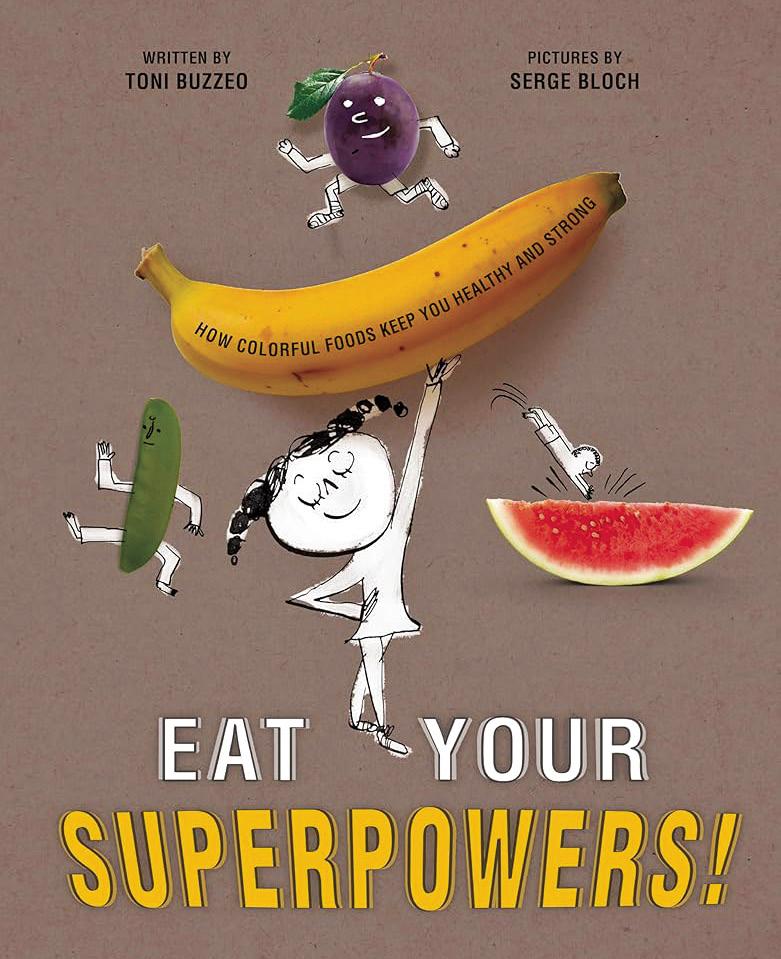
While others might be experiencing the adventure of school for the first time. While we can’t prepare them for everything that might happen when they step onto the school grounds, the following books can help set them up for a good year.
The first two books are filled with tips that can help your kids start off on the right foot. By reading Eat Your Superpowers by Toni Buzzeo and illustrated by Serge Bloch, your children can learn how the different foods we consume help us. For example, if your child eats plums, it can help them calm down. Who knows, this book might even help encourage picky eaters to try something new. For ages 2 to 5.
The other book that is filled with tools to help your children start the new school year successfully is You Are A Rainbow of Energy: A Kid’s Guide to the Chakras by Crystal McCreary and illustrations by Sonali Zohra. In this book, your chil-

dren will be introduced to their different chakras and the colours associated with each one. It also has simple yoga poses and mantras for them to try to help them calm their minds and bodies. For children ages 4 to 7.





Journeys of the Heart is a culturally-rooted drop-in program for Indigenous Children aged 0–5 years and their parents/caregivers/relatives.
Participation in the following activities will support positive cultural identity and lifelong learning:
Circle time • Moe the Mouse • Seeds of Empathy • Honoring our Wing Chief Free Play • Curriculum • Snack Time • Outside Play • Physical Activity • Fieldtrips
Program runs Monday and Wednesday 9 to 11:30 am (closed stat holidays) Program starts October 6 and runs until the second week of June
For further information please contact Sarah McDonald at 250-590-5048 or smcdonald@hulitan.ca
A program of Hulitan Family & Community Services Society Hulitan Early Years Centre 2125 Sooke Rd 250-590-5048 hulitan.ca









Even if your children are eating the correct foods and have the tools they need to help them calm down, they might still have worries. Especially if it’s their first time going to school. They might be feeling scarecited (scared and excited), just like Afua is in Scarecited on the First Day of School by Alliah L. Agostini and illustrated by Lala Watkins. This cute story captures many emotions young children might feel from being embarrassed and sad if the teacher calls them the wrong name, or shy and curious when meeting new kids, to feeling strong and confident if something goes right. For ages 4 to 7.
Even if it isn’t their first year, your children might have worries. If that’s the case, you might want to check out The Worry-Worry Whale and the Classroom Jitters by Deborah Diesen with pictures based on illustrations by Dan Hanna.

In this book, Willa is worried about being called on in class to answer a question. She knows the answer, but Willa is afraid the words will drift away if the spotlight is put on her. Fortunately, her parents know how to help. When she gets home, they teach her a few strategies that your kids might find useful too. For ages 4 to 7.
The final book is for older kids. Bravey: Chasing Dreams, Befriending Pain, and Other Big Ideas by Alexi Pappas is a moving memoir (just make sure you grab the version that’s adapted for young readers). Pappas talks about her life, her struggles, her triumphs and her desire to be a bravey. Her journey to the

Olympics is heart-breaking and hopeful. And, because Pappas wants to help others achieve their dreams, she includes “Bravey Notes” at the end of each chapter. For example, she wants her readers to know that “asking for help isn’t a weakness—it’s actually a strength,” and that “it’s normal to feel a depletion or ‘dip’ after a big peak in life.” For ages 10 to 12.
I hope your children are feeling more excited than scarecited to return to school. But if they are a little worried, these books can help you get them set up for a great school year.
and learn about her upcoming books visit christinavanstarkenburg.com.
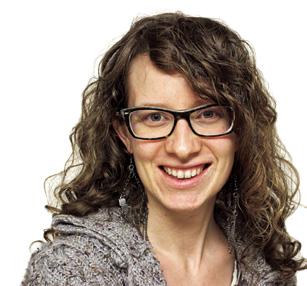

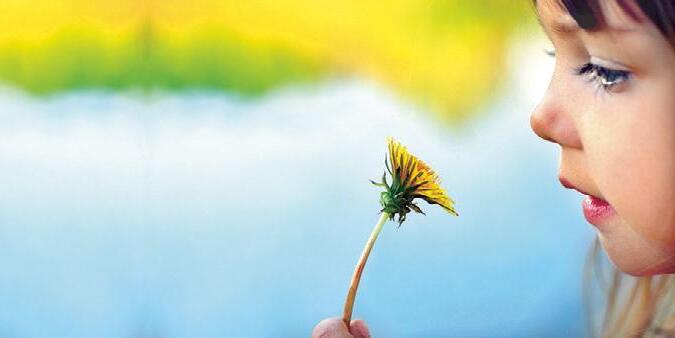














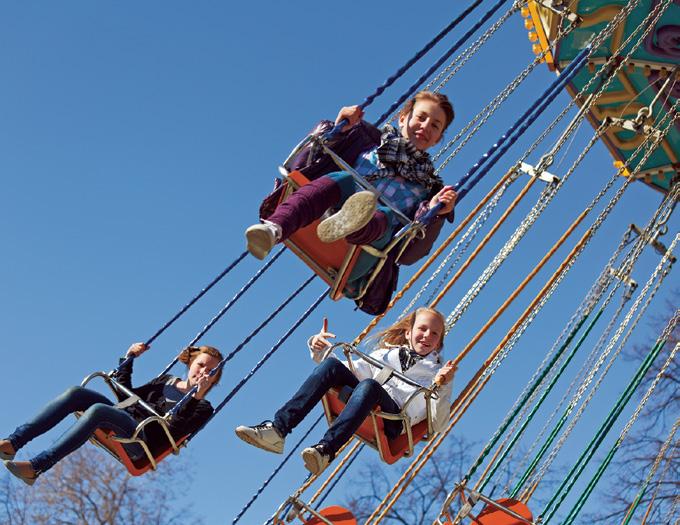



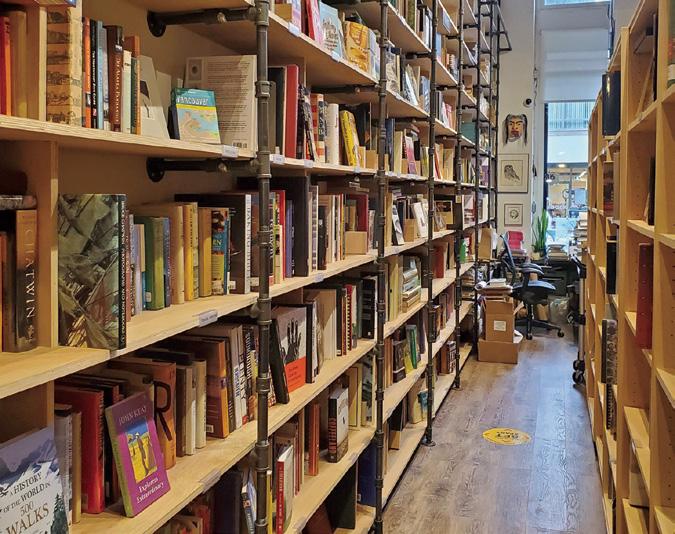








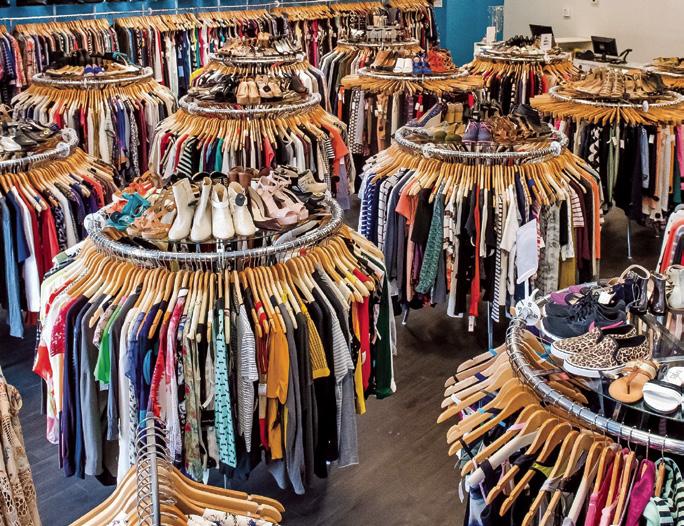

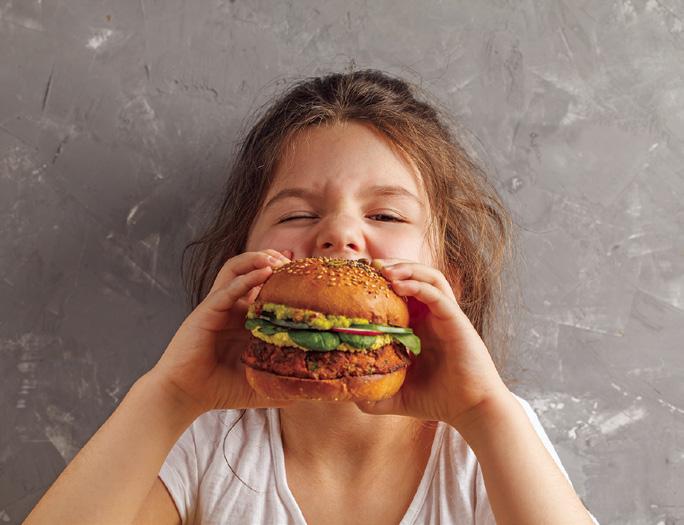



Ministry approved BC curriculum Kindergarten to Grade 12 program
Contemporary Indigenous Studies 12 available for enrollment
Full time or part time available Grade 10 to 12
Adult learning options
Grade 8 to 12: over 50 course options
Innovative learning management system
Experienced online learning teachers
Opportunities for self-paced, flexible, convenient learning
Direct teacher support available
Develop communication and technical online skills registering full-time or for a single course